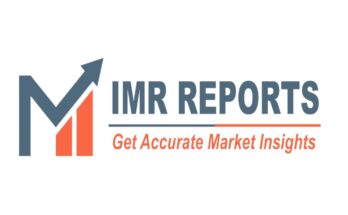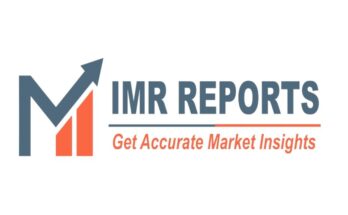The Veterinary Infectious Disease Diagnostics by The Business Research Company provides market overview across 60+ geographies in the seven regions – Asia-Pacific, Western Europe, Eastern Europe, North America, South America, the Middle East, and Africa, encompassing 27 major global industries. The report presents a comprehensive analysis over a ten-year historic period (2010-2021) and extends its insights into a ten-year forecast period (2023-2033).
Learn More On The Veterinary Infectious Disease Diagnostics Market:
https://www.thebusinessresearchcompany.com/report/veterinary-infectious-disease-diagnostics-global-market-report
According to The Business Research Company’s Veterinary Infectious Disease Diagnostics , The veterinary infectious disease diagnostics market size has grown strongly in recent years. It will grow from $1.77 billion in 2023 to $1.95 billion in 2024 at a compound annual growth rate (CAGR) of 9.9%. The growth in the historic period can be attributed to increasing pet ownership, rising awareness, government initiatives.
The veterinary infectious disease diagnostics market size is expected to see strong growth in the next few years. It will grow to $2.82 billion in 2028 at a compound annual growth rate (CAGR) of 9.7%. The growth in the forecast period can be attributed to emerging diseases, increased research and development, globalization of veterinary practices, growing livestock population. Major trends in the forecast period include technological innovations, rapid adoption of point-of-care testing, integration of molecular diagnostics, digitalization in veterinary healthcare, expansion of product portfolios, collaborations and partnerships, customized diagnostics for different animal species.
The increasing incidence of transboundary and zoonotic diseases such as rabies is expected to propel the growth of the veterinary infectious disease diagnostics market going forward. Zoonoses are diseases and infections that are transferred spontaneously between humans and vertebrate animals. Veterinary infectious disease diagnostics are used to detect rabies in pets and animals. These devices are used to prevent animals from causing death. For instance, in 2021, according to the World Health Organization (WHO), a Swiss-based government agency, rabies disease was found in over 150 nations and territories. Dogs are the most common source of human rabies deaths, accounting for up to 99% of all rabies transmissions. Children under the age of 15 make up 40% of those bitten by suspected rabid animals. Infection kills tens of thousands of people every year, mostly in Asia and Africa. Therefore, the increasing incidence of transboundary and zoonotic diseases is driving the growth of the veterinary infectious disease diagnostics market.
Get A Free Sample Of The Report (Includes Graphs And Tables):
https://www.thebusinessresearchcompany.com/sample.aspx?id=6574&type=smp
The veterinary infectious disease diagnostics market covered in this report is segmented –
1) By Infection Type: Viral Infections, Bacterial Infections, Parasitic Infections, Other Infections
2) By Animal Type: Companion Animal, Food-Producing animals
3) By Technology: Immunodiagnostics, Molecular Diagnostic, Other Technologies
4) By End User: Reference Laboratories, Veterinary Hospitals and Clinics, Point of Care, Research Institutes and Universities, Other End Users
Technological advancements have emerged as the key trend gaining popularity in the veterinary infectious disease diagnostics market. Major companies operating in the veterinary infectious disease diagnostics market are introducing new technological innovations to sustain their position in the market. For instance, in February 2022, Merck Animal Health, a US-based company specializing in the development of animal drugs, launched SenseHub Feedlot based on electronic ear tag technology. The SenseHub Feedlot is composed of a reusable ear tag and an installed antenna and an infrared thermistor that can collect, save, and share information from a gateway to a data platform. SenseHub Feedlot is a technology-enabled solution that detects illness more quickly, reliably diagnoses a disease, and detects illness earlier to effectively manage pain in cattle than by ocular inspection.
The veterinary infectious disease diagnostics market report table of contents includes:
1. Executive Summary
2. Market Characteristics
3. Market Trends And Strategies
4. Impact Of COVID-19
5. Market Size And Growth
6. Segmentation
7. Regional And Country Analysis
.
.
.
27. Competitive Landscape And Company Profiles
28. Key Mergers And Acquisitions
29. Future Outlook and Potential Analysis
Contact Us:
The Business Research Company
Europe: +44 207 1930 708
Asia: +91 88972 63534
Americas: +1 315 623 0293
Email: [email protected]
Follow Us On:
LinkedIn: https://in.linkedin.com/company/the-business-research-company
Twitter: https://twitter.com/tbrc_info
Facebook: https://www.facebook.com/TheBusinessResearchCompany
YouTube: https://www.youtube.com/channel/UC24_fI0rV8cR5DxlCpgmyFQ
Blog: https://blog.tbrc.info/
Healthcare Blog: https://healthcareresearchreports.com/
Global Market Model: https://www.thebusinessresearchcompany.com/global-market-model


